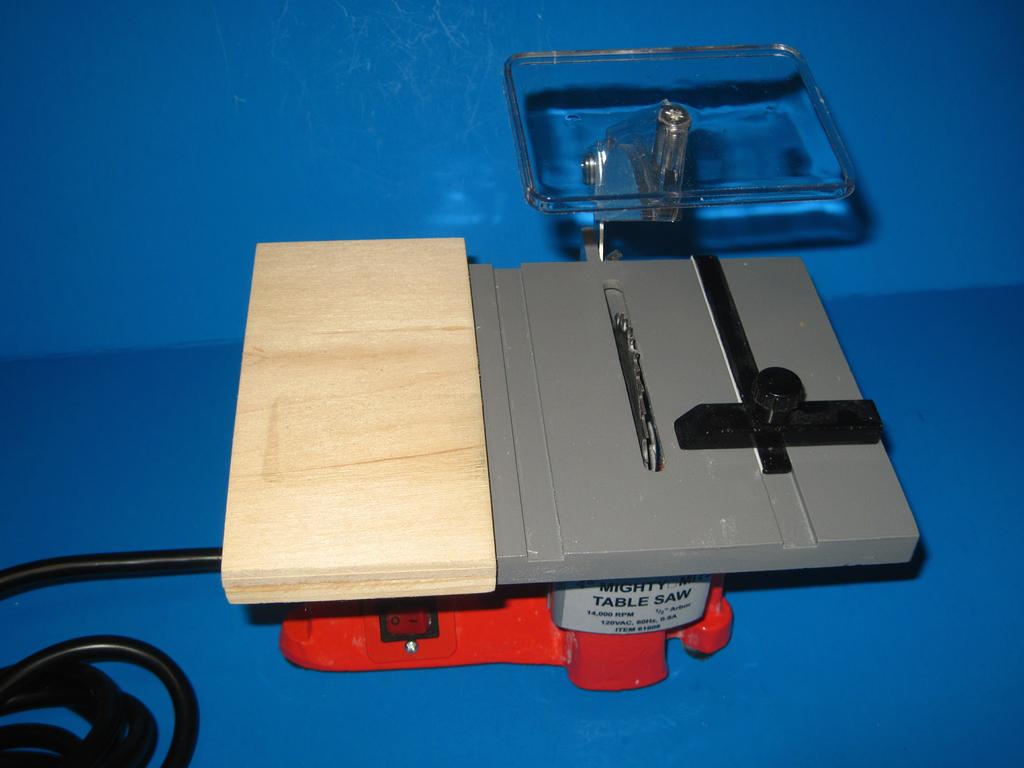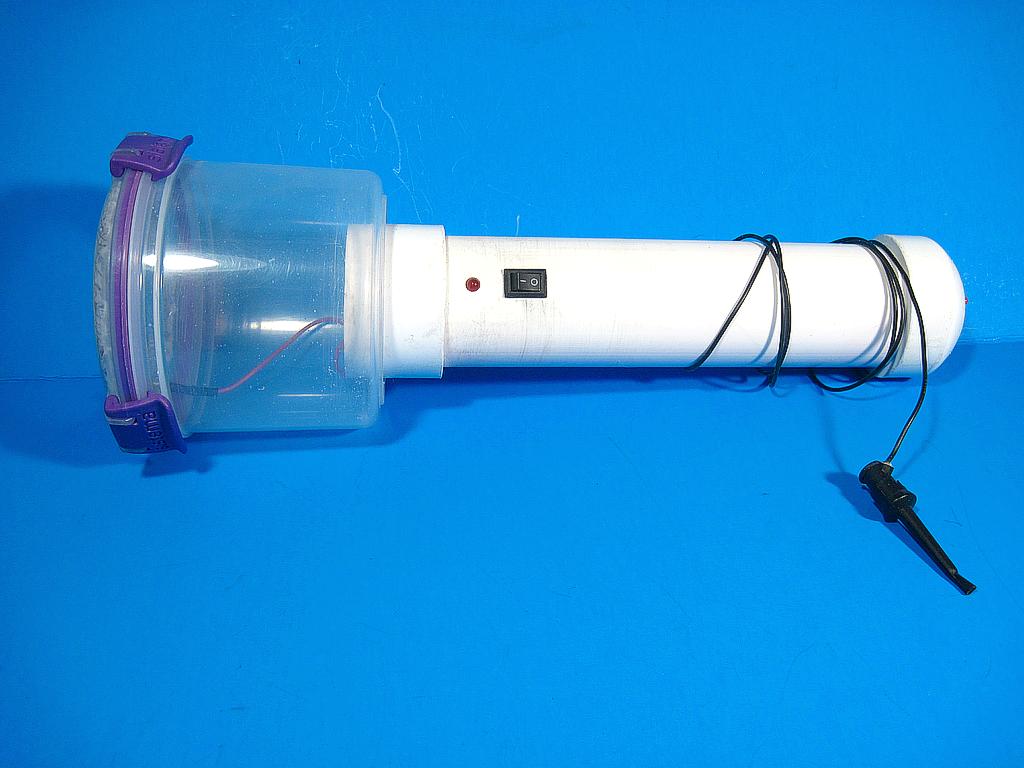Regarding the 2/22 Build a cement silo article, how did the author cut the PVC pipe perfectly square? I’ve tried this in the past and failed after numerous tries.
Wrap an 8 1/2 x 11 sheet of paper tightly around the pipe and tape it in place . This will give you a guide to follow when making the cut. If the cut does not turn out to be perfect the paper can serve as a guide to file or sand it straight.
Cut in on a chop saw. That’s what we do in the construction business if there is one on the job site. A regular wood blade cuts it fine, with little or no extra wear to the blade.
Sheldon
Do you have a chop saw or know someone who does?
Good evening
I have a few chop saws. My favorite is my green one. I have also seen PVC explode in power miter saws if there’s any play to the bearings or the blade is slightly untrue.
Kids, don’t try this at home as I don’t think it’s a very good idea.
mvlandsw’s idea sounds good and I did something similar. I needed to cut some PVC pipe square and make some half pipes out of them.

Just take some wider masking tape and wrap it around the pipe. If it doesn’t meet up just right, back the tape up and re-adjust until it does.
Then take a razor saw or hack saw and follow the edge of the tape around turning the pipe slowly while you cut.

On the half-pipes, I just followed the edge of the tape the other way.
TF
REALLY?
BUT, what I see in your picture is NOT PVC pipe. That is polypropylene thin wall pipe used for molded pumbing traps and tailpiece extensions. I would not cut that with a chop saw, it will explode. On the job we cut that stuff with tin snips or pipe cutting “sissors”.
BUT, I would not use it to build models either, it is crappy to glue to.
To cut PVC drain pipe with a chop saw all you have to do is have a reasonably fine tooth blade, like you would use for trim carpentry and go slow. But maybe I have never used any worn or cheap junk chop saws. Every plumber I know loves to cut PVC on a chop saw given the chance.
I have made thousands of PVC pipe cuts with a chop saw, never a problem in 30 years of doing so.
It leaves a beautiful, perfect machine qua
Really
With all due respect Sheldon, as I can see you didn’t give me much!
The PVC pipe I saw explode in a chop saw was 1 1/2 drain pipe. Shane broke two fingers that day.
I use one of these to cut PVC pipe straight. But to each their own tool.

It rachets through pretty effortlessly and I don’t have to take a trip to the saw or clean up any burs as it cuts nice and clean.
And for the glue part, I don’t have any problem finding the right glue for the right medium.
TF
I have one of those too, but I would not call cutting 1-1/2" drain pipe with it “easy”. Maybe you have stronger hands than me.
Yes, if you have dull framing blade in the chop saw and you try to see how fast you can “zip” it down on that plastic pipe, you might get an unhappy result.
Of course even cutting wood, I take a dim view of those who think they are speed demons with my chop saw.
And dull cutting tools are dangerous for any task…
I will go back to work now.
Sheldon
One of my best finds is the Harbor Freight 4” Mighty Might Table Saw.

It didn’t come with a fence so I made one out of Baswood.
Since I got it I use it to cut PVC pipe for my projects, I simply use the guide that came with the saw and rotate the pipe into the blade.
I used it to cut the handle on my Luke Towan Static Grass 1½” PVC applicator handle.

I also cut the PVC connectors on the saw.
The Mighty Might is slick for hobby work.
Mel

My Model Railroad
http://melvineperry.blogspot.com/
Bakersfield, California
Turned 84 in July, aging is definitely not for wimps.
That is a slick looking mini table saw Mel and looks like the perfect tool for modeling. Nice job on that custom fence you made.
I’ve been wanting to get something like that for when I start building model structures. Those packages of scale wood at the hobby store can be a bit pricey when you start adding up what you need for that.
I have a Harbor Freight near my place and I’m going to have to go check that out. Thanks for the tip[Y]
P.S. I seen that Towan video on the static grass applicator, nice job on that as well.
TF
I bought a spare blade too just incase they don’t stock them down the road.
Mel

My Model Railroad
http://melvineperry.blogspot.com/
Bakersfield, California
Turned 84 in July, aging is definitely not for wimps.
I’m with Sheldon on using a chop saw.
The tooth spacing of the blade should be 2/3 the thickness of the pipe wall. That’s very roughly 2/3 of 1/8".
That kind of blade can be tough to find, so you might have to accept greater tooth spacing. As soon as the tooth spacing is greater than the wall thickness, you start running the risk of the blade “notch” suddenly dropping down and tearing out too much. The bigger the spacing, the bigger the problem.
You CAN cut with an excessive tooth spacing, but you have to be careful. And yes, a fresh blade with enough set can help.
On a slightly different note, I used a chop saw to cut plastic passenger car roofs, crossways. I then glued the pieces together to get a longer roof. It works REALLY well. At least, for me.
A milling machine does an even better job, by the way.
Ed
We do more trim work than framing work, so I generally have an 80 tooth blade in the 12" yellow chop saw. Now if we end up framing a whole house, I change it out for a 40 or 60.
Go slow, no worries. And no burrs either.
Sheldon
The theoretical tooth count for a 12" blade cutting 1/8" walled tubing would be somewhere around 400. I don’t recall blades having much over 120 teeth.
That said, the coaser the tooth count, the greater the risk of sadness. And maybe despair. Even some snivelling.
Ed
I use a bonded abrasive chop saw blade (no teeth) in my chopsaw to do Schedule 40 PVC pipe on a big job with lots of cuts. If I need a 1/4’’ more or less removed from the pipe, no problem, just cut it off. I use my chop saw for my Schedule 40 PVC HO scale silos.
The wrapped paper around the pipe works great for the hobbyist.
I can’t say how he did it, I do not have the 2/22 issue yet but,
If you are using Schedule 40 PVC pipe and not tubing, buy a Furnco coupling, that is a ‘‘reducing coupling’’ type, as in 1-1/2’’ X 2’’ if you are doing 1-1/2’’ and 2’’ PVC pipe, slide it up to your cut line, tighten it and saw around and a round till you are through, using the rubber end of the Furnco as a guide. If you are doing 3’’ and 4’’ PVC just get a 3’’ X 4" furnco reducing coupling.
I will guess that you will find out that you can not slide the smaller end of the Furnco over the larger pipe, with that you will need to ‘‘rough cut’’ the larger size pipe to about four inches longer then you need, leaving two inces of waste at each end then slide the coupling down to the cut line. Or just get a Furnco coupling in size to fit each pipe in size that you choose.
The reason the pipe exploded was binding caused by having no way for the cut pipe to expand away, only direction was back into the blade. Putting it up on something like a thin board would have proubly saved the day, also slow cutting.
I don’t have a chop saw. I used a miterbox and a hand saw with a reasonably fine blade to make similar cuts. A chop saw may be the best and fastest, but a miterbox is cheaper.
Good luck,
Richard
To cut anything square, a circular miter saw with a finer toothed blade will give excellent results. As always, go slow and be careful. Keep your fingers away. If you are cutting something round, clamp it. Wear safety glasses.
So… about cutting PVC on a job site…
I have been installing my irrigation system for a few weeks, and have been using this Milwaukee 18 volt “Hackzawl”, which is a smaller version of a Sawzall, and I love it.

It can be used one handed, and I can cut the pipe right in place. No taking it back to a miter saw, very little measuring, and no ratchet cutter wearing out my wrist.



It is so much more convenient doing all the cutting in place.
-Kevin
Note that the much smaller 4" blades on the Mighty Mite can also be obtained in diamond form, helpfully without the anti-vibration slots found on some of the diamond disc saws, and in metal up to 72-tooth, which comes out superior in nominal tooth count to 12"/400t. At least one aftermarket source has a good reinforced porcelain and diamond disk with an adaptor to 16mm, which is close to what the Harbor Freight saw uses.
I confess I haven’t used power tools to cut PVC in many years; I just use one of those roller-guided miter boxes (with what is essentially a short piece of bandsaw blade) which goes neatly through most anything in a few seconds with low vibration or excitement…